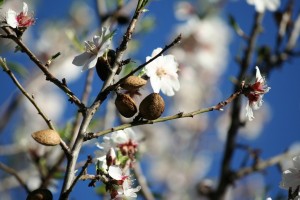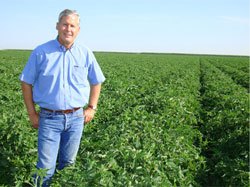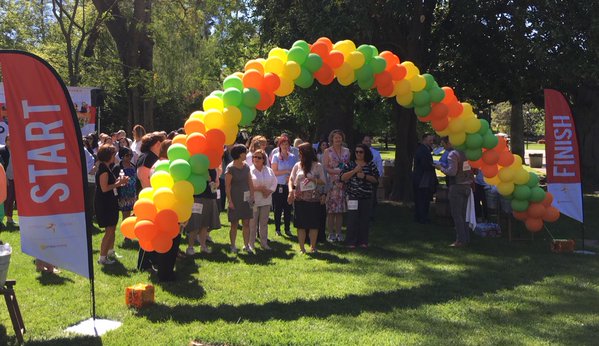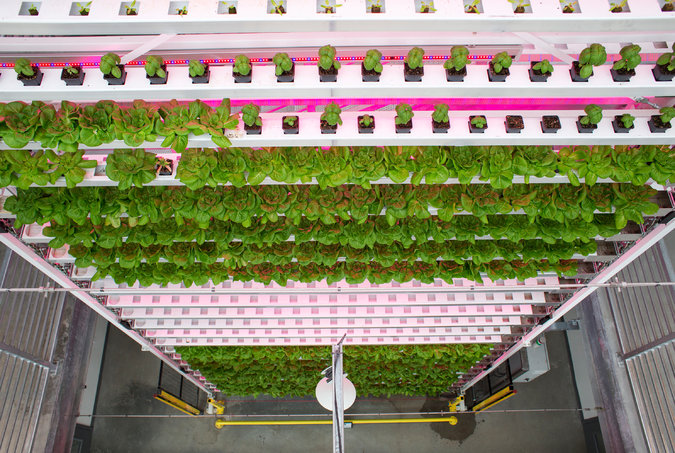
By Adele Peters
Every February, semi trucks packed with honeybees—a fleet of around a million hives in total—heads to California’s almond orchards, where billions of rented bees fly from flower to flower to pollinate the crop. More than a half million local hives join them.
But as bee populations decline, and California farmers plant more acres of almond orchards, the cost of renting those beehives keeps going up. So an increasing number of farmers are planting some almond trees that can handle pollination on their own.
The Independence Almond doesn’t technically need bees to survive. It is cross-bred with a variety of peach tree and can self-pollinate. The tree is now so popular that farmers are on waiting lists as long as two years to get it. “When the pollination time comes, a breath of air will pollinate that crop,” says Harbir Singh, a sales representative for the Dave Wilson Nursery, which sells the Independence almond exclusively.
Honeybees continue to struggle with disease, pesticides, and other stresses. Native pollinators are also struggling; 40% of food-pollinating wildlife now faces extinction. If the number of pollinators continue to drop, could the almond, and other crops that traditionally rely on pollinators, survive by switching to “self-fruitful” varieties?
The short answer: not very well, at least not at this point. Out of the 115 most commonly grown foods around the world, 87 crops use animal pollinators. A salad bar in a world without bees would look pretty sad. (Those foods that don’t need pollinators—like rice and sugarcane—also tend to be less nutritious; one recent study concluded that in some developing countries, as much as half of the population would lack important nutrients like vitamin A if bees no longer pollinated crops).
For 13 crops, including most varieties of squash, cantaloupe, and cocoa, pollinators are essential. Thirty other foods, such as apples, cherries, and avocados, are highly dependent on pollinators, meaning that crop yield could drop as much as 65% without them. The fruit that is produced might also not be as good. Raspberry plants, for example, can pollinate themselves, but the resulting raspberries are tiny without the help of honeybees, bumblebees, or other pollinators.
For the Independence almond, even though the nursery says it could be grown without bees, it’s most commonly used with them—just fewer than usual. “The company is correct in saying that it will set a commercially viable crop, but what we do know is that we will set a much higher crop if we do have bees,” says David Doll, with the University of California Cooperative Extension in Merced. “Some research out of Europe suggests a 30% to 40% increase per crop.” Most farmers use one hive per acre (up to 60,000 bees) with Independence trees, versus two hives an acre with typical almond trees.
Crops without pollinators also don’t always produce the same yields year after year. “You’re never certain, particularly with climate change, with the much warmer January temperatures, whether that’s going to be consistent,” says Thomas Gradziel, who has been breeding self-compatible almonds at the University of California-Davis for decades. “If it’s not consistent, you’ve just lost a major portion of your crop and one of your major years where you should have been using that money to pay back your loan to the bank.”
Right now, most farmers only plant the Independence almond in a portion of their orchards, along with other varieties of trees, to hedge their bets. “We’re at a stage of testing, experimentation, as far as where self compatibility, self-pollination, fits into our cropping system,” says Gradziel.
Most consumers also expect to buy the “nonpareil” variety of almond, which is self-sterile. Other varieties that have been developed may be better at pollinating themselves, but may not taste or look the same. In Spain, for example, most almond varieties are self-pollinating, but they have hard shells and aren’t considered to have the same quality as the typical California almonds.
The result: Even as farmers plant self-fruitful trees, they’re still very aware of how much they need bees. “The majority of almond farmers, if not all the farmers, are very aware of the importance of bees, and have modified their practices in order to make sure that they’re providing a safe habitat and safe ‘working environment’ for bees,” says Doll. “This includes spraying at different times, not spraying when bees are in the field, those types of things.”
Researchers still continue trying to make new self-fruitful and self-compatible varieties of crops; Gradziel uses traditional breeding to work on the almond, while others use modern genetic engineering or gene editing methods to work on crops like walnuts. It’s possible that eventually some varieties might not need bees at all, though Gradziel thinks that shouldn’t necessarily be the goal.
“It’s not only that almonds need bees, but the bees need almonds,” he says. In the current system, commercial honeybees lead a nomadic life, moving from almonds to apples or vegetable crops. “Those bees come to California to pollinate the almond crop, but those bees also come to California because this is the first good pollen source for those beehives. For beekeepers, this is a very important stop to get their hives up to strength and start that season of basically making that pollination throughout the country.”
For wild pollinators, too, like the bumblebee, crops like almonds can be an important source of food. “There’s work here at Davis where they’re looking to reintroduce the bumblebee,” he says. “Then the almond bloom early in the spring would be a huge asset to get these natives back up and running.”
Doll agrees that truly pollinator-independent crops are still a distant goal, and that it’s best to try to protect existing pollinators. “I think that’s the holy grail,” he says of self-pollinating crops. “But the bee is a wonderful insect to commercial agriculture, whether you’re a five-acre grower, whether you’re growing blueberries or almonds. I think there always will be a benefit to having bees around. Now, will we be able to reduce our reliance on bees? Maybe, I think so. But I still believe that the pollinator will be critical to all of agriculture, especially fruits and nuts, for the foreseeable future.”
Link to article










